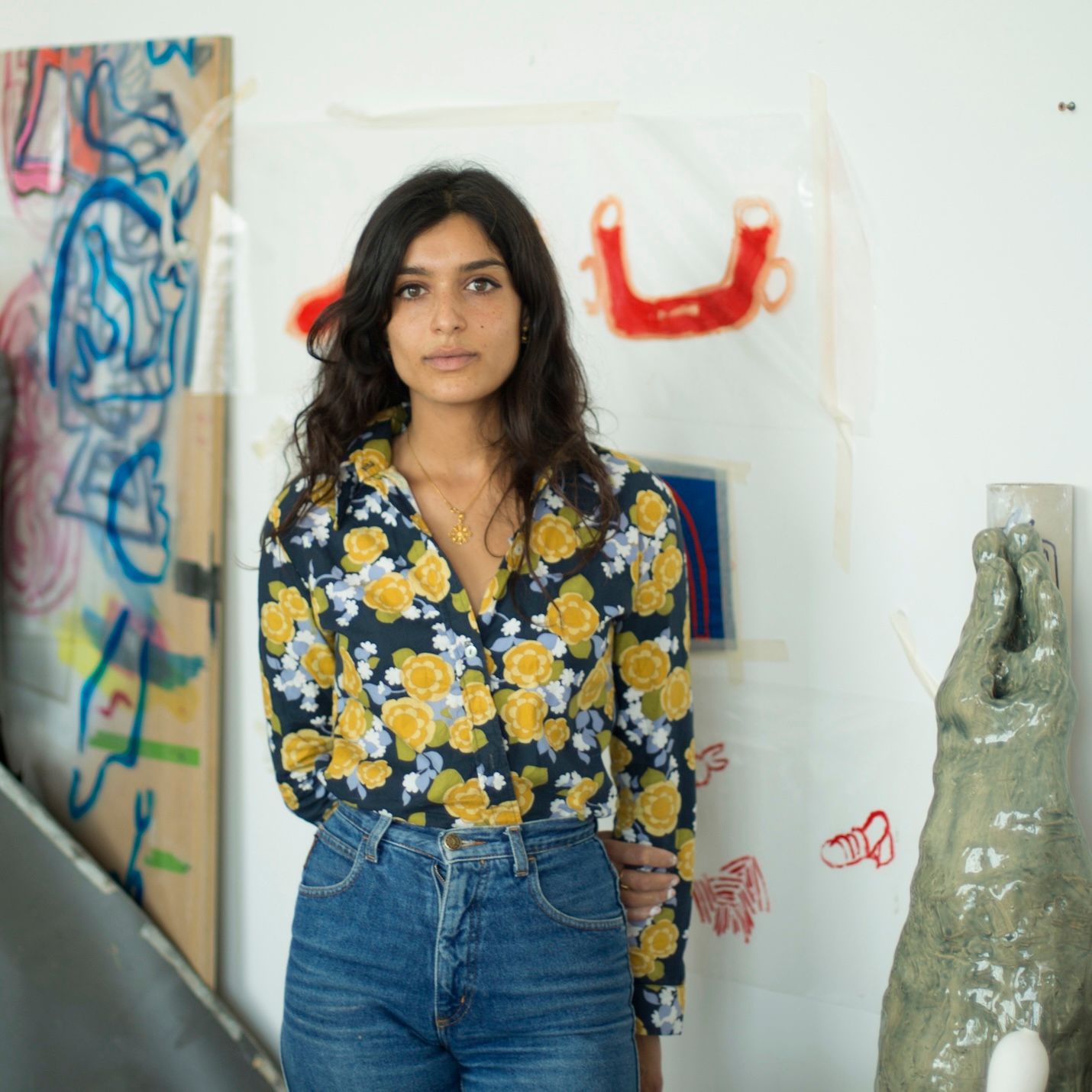
DOCENT PICK
The Small Things / From the Lowest Land
10/12/2024
Newchild current exhibition
In The Small Things / From the Lowest Land, the works of British artist Anousha Payne (b. 1991) and Danish sculptor Sonja Ferlov Mancoba (1911–1984) converge in a dialogue that transcends generations and geographies. The Newchild Gallery becomes a space where the artists’ visions converge, creating a cohesive, landscape-like experience that invites viewers to explore their shared creative expression.

A story of Forms and Objects
The practices of Anousha Payne and Sonja Ferlov Mancoba reveal striking parallels, grounded in a shared belief in art as a universal language that fosters connection and community. Both artists intertwine personal narratives with collective symbolism, delving into themes of transformation—where figures merge with animals, found objects reflect humanity, and the interconnectedness of all things comes to the forefront.
Sonja Ferlov Mancoba

Mancoba, a central figure in Danish modernism, crafted sculptures that delve into the existential and cultural conditions of human life, reflecting her utopian belief in art’s power to inspire social change. Her connection to the revolutionary surrealist movement and her involvement with groups such as Linien, Høst, and Cobra underscore her fascination with non-Western cultures, particularly African imagery—a thread woven throughout her practice and echoed in the work of her contemporaries.
The Surrealist fascination with the unconscious and the power of imagination were central themes throughout her career, especially as she began experimenting with paintings, drawings and collages.
Anousha Payne

Payne’s practice resonates with Mancoba’s focus on human existence, using glazed ceramics, bronze, found objects, and the fluid gestures of watercolor, ink, and oil on canvas to explore the universal language of form.
Spirituality and animism take centre stage in the works of Anousha Payne. Her practice intriguingly fuses moral dilemmas, magic, immateriality, and metamorphic characters.
Spirituality and animism take centre stage in the works of Anousha Payne. Her practice intriguingly fuses moral dilemmas, magic, immateriality, and metamorphic characters.
Rooted in stories carrying a rich historical legacy passed down through generations, her work evolves through personal adaptations and embellishments. The narratives Payne explores, particularly in Tamil folklore, serve as the foundation for her exploration of human interaction, communication, and the evocative power of simple gestures and expressions.
human, human, human
Reflecting on this shared dialogue, Anousha Payne shares her perspective on the exhibition:
”The exhibition stems from an affinity and an ongoing conversation; the striving to depict the ‘inhumanly human, humanly inhuman.’ I first encountered Sonja Ferlov Mancoba’s work five years ago at her retrospective at SMK in Copenhagen. I was initially drawn to what I would describe as her sculptures of ‘prehistoric emojis’—a kind of universal, simplified version of a face, abstracted to the point of being unplaceable in time. These forms could belong to 2024 or 1604. Her aim to create images that transcend temporal and cultural boundaries, offering a universal language of human connection, deeply aligns with my own practice."
”The exhibition stems from an affinity and an ongoing conversation; the striving to depict the ‘inhumanly human, humanly inhuman.’ I first encountered Sonja Ferlov Mancoba’s work five years ago at her retrospective at SMK in Copenhagen. I was initially drawn to what I would describe as her sculptures of ‘prehistoric emojis’—a kind of universal, simplified version of a face, abstracted to the point of being unplaceable in time. These forms could belong to 2024 or 1604. Her aim to create images that transcend temporal and cultural boundaries, offering a universal language of human connection, deeply aligns with my own practice."
"Mancoba’s interest in imagery from other ages and cultures sought to convey the human body as a universal presence, embodying experiences that extend beyond the individual. This resonates with my own work, as I strive to develop shared codes and languages that connect to the essence of what it means to be human..”
Found Objects and their legacy
At the heart of The Small Things / From the Lowest Land lies the concept of the ready-made, or objet trouvé—found objects reimagined as integral elements of art, challenging and expanding traditional notions of artistic creation. Rooted in the Dada and Surrealist movements of the early 20th century, this approach, pioneered by artists such as Hans Arp and Kurt Schwitters, influenced Mancoba’s early sculptural assemblages.
Today, this legacy finds renewed expression in Payne’s works, where found objects are seamlessly integrated into biomorphic sculptures imbued with personal narratives and symbolic resonance.
As Payne explains, these objects act as vessels for memories and symbols, bridging her personal experiences with broader, universal ideas. Her sculptures, blending human, animal, and mythic forms, create a space where folklore and spiritual symbolism merge with a contemporary interpretation of the objet trouvé tradition.
On Our Way Beyond
These works embody André Breton’s notion of objet trouvé as a “random encounter” with objects that resonate with one’s innermost desires, forging an evocative connection to both the tangible world and the intangible realms of meaning and memory. The works of Payne and Mancoba transcend temporal and cultural boundaries, demonstrating the capacity of visual language to communicate beyond words. As Sonja Ferlov Mancoba aptly wrote, “... Only through each other can we live and breathe, and no-one creates alone ...”